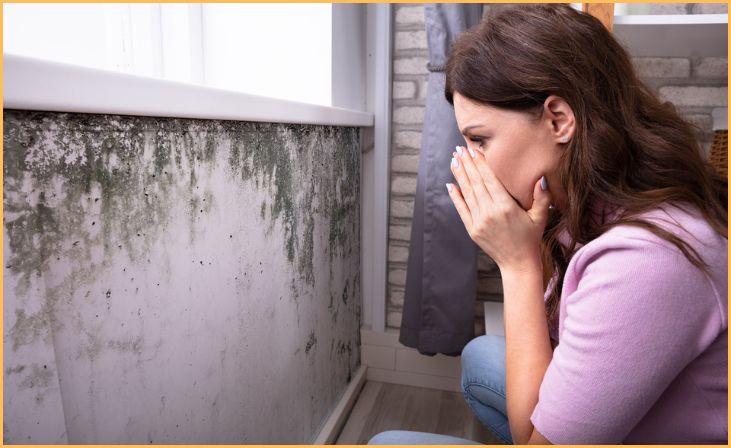Scents that Attract Roaches Like Magnets – Cockroaches, resilient and unwelcome intruders, have an uncanny ability to detect scents that beckon them into our living spaces. Understanding these olfactory triggers is essential for effective pest control and prevention.
This exploration delves into the common scents that act as magnets for roaches, shedding light on their attraction to food remnants, organic matter, moisture, and certain household items. Moreover, we’ll investigate the inadvertent invitation provided by fragrances in cleaning products and scented items.
While the focus is on awareness rather than fostering roach allure, the ultimate goal is to empower homeowners with the knowledge needed to eliminate attractants.
Through proactive measures, such as proper food storage, moisture control, waste management, and minimizing roach-friendly scents, we can create an inhospitable environment that discourages these unwanted guests from establishing residency in our homes.
Importance of understanding what attracts roaches for prevention
Understanding what attracts roaches is paramount for effective pest prevention and control. The significance lies in the proactive measures and informed strategies that can be implemented to create an environment hostile to these resilient pests. Here are key reasons why this understanding is crucial:
- Targeted Prevention: Knowledge of roach attractants allows homeowners to target their prevention efforts. By identifying and addressing specific factors that entice roaches, individuals can take focused actions to minimize the risk of infestation.
- Cost-Effective Solutions: Awareness of roach attractants helps in adopting cost-effective preventive measures. Instead of resorting to broad-spectrum pest control methods, homeowners can invest resources in targeted solutions that address the root causes of attraction.
- Environmental Considerations: By understanding what attracts roaches, individuals can choose prevention methods that are environmentally friendly. This promotes a sustainable approach to pest control, minimizing the reliance on harmful chemicals.
- Health and Safety: Roaches are associated with various health risks, including the spread of allergens and diseases. Preventing their attraction helps safeguard the health and safety of occupants, particularly in homes with individuals sensitive to allergens.
- Long-Term Control: Knowledge of roach attractants facilitates long-term control. Rather than addressing infestations reactively, a proactive approach focused on eliminating attractants ensures a sustained and consistent defense against roach intrusion.
- Peace of Mind: Understanding and implementing preventive measures provides homeowners with peace of mind. The assurance that their living spaces are inhospitable to roaches reduces the stress and inconvenience associated with infestations.
Also, Read – Top 10 Classic American Cars
Scents that Attract Roaches Like Magnets
Food Odors

Roaches are drawn to food odors, particularly those from sugary and starchy items. Crumbs, spills, and leftover food act as magnets, enticing these pests.
To deter roaches, maintain a clean environment by promptly wiping surfaces, securing food in airtight containers, and disposing of trash regularly. Be vigilant in kitchens and dining areas to minimize the allure of food scents, which can help prevent roach infestations.
Garbage Odors
Roaches are attracted to the odors emanating from garbage. The scent of decaying food in trash bins acts as a strong lure for these pests. To discourage roaches, ensure proper sealing of trash bags and dispose of garbage regularly.
Clean the bins to eliminate lingering odors that might attract roaches. Proper waste management is crucial in minimizing the appeal of garbage-related scents, contributing to a less inviting environment for roaches and helping prevent infestations.
Grease and Oil
Roaches are enticed by the scent of grease and oil, commonly found in kitchen areas. Regular cleaning of stovetops, ovens, and other appliances is essential to reduce these odors and discourage roaches.
Grease buildup on surfaces can act as a potent attractant, prompting these pests to linger. Adopting a routine cleaning schedule and using degreasers can effectively mitigate the appeal of grease and oil scents, creating an inhospitable environment for roaches.
Taking proactive measures in the kitchen can play a significant role in deterring these pests and preventing potential infestations.
Pet Food

Roaches are drawn to the scent of pet food, making it important to manage pet feeding areas diligently. Store pet food in secure, airtight containers to minimize odors that attract roaches. Clean up any spilled food promptly, as even small amounts can be enticing.
Regularly sanitize pet feeding dishes and surrounding areas to eliminate residual scents that might invite roaches. By maintaining cleanliness and proper storage practices for pet food, you can significantly reduce the risk of roach infestations in your home.
Vigilance in pet care contributes to a pest-free environment and promotes the well-being of both pets and homeowners.
Also, Read – Greatest Classic Cars on Earth
Cardboard
Roaches are attracted to the glue in cardboard boxes, making them potential magnets for infestations. If susceptible areas are prone to roaches, consider replacing cardboard storage with plastic containers.
Roaches may feed on the glue, posing a risk to items stored in cardboard. Opt for storage solutions that deny roaches both food and shelter. Keep storage areas clean and well-ventilated, reducing the appeal of cardboard odors.
This proactive approach minimizes the likelihood of attracting roaches and helps safeguard against potential infestations in spaces where cardboard is commonly used.
Damp and Humid Conditions
Roaches are drawn to damp and humid conditions, creating an ideal environment for them to thrive. Addressing leaks promptly, using dehumidifiers, and ensuring proper ventilation are crucial steps to deter roaches.
Moisture-laden areas, such as basements and bathrooms, can attract these pests. Regularly inspect and repair water sources, and consider using moisture-absorbing materials in susceptible areas.
By minimizing humidity, you reduce the attractiveness of your home to roaches, helping to prevent infestations. Proactive measures against damp conditions contribute significantly to creating an inhospitable environment for roaches, enhancing overall pest control efforts.
Mold and Mildew

Roaches are attracted to the scents of mold and mildew, often thriving in damp environments. Regularly clean and ventilate areas prone to moisture to discourage roaches.
Moldy and mildewed surfaces, commonly found in bathrooms and basements, act as beacons for these pests. Address leaks promptly, improve ventilation, and use mold-resistant materials to create an inhospitable environment for roaches.
By reducing mold and mildew, you minimize the appeal of your home to roaches, contributing to effective pest prevention. Proactive measures against moisture-related issues play a key role in maintaining a clean and roach-resistant living space.
Conclusion
In conclusion, awareness of roach attractants empowers homeowners to fortify their living spaces against infestations. By implementing targeted preventative measures and eliminating enticing factors, individuals not only reduce the risk and cost of pest control but also create a healthier and more secure home environment.
Proactive strategies, rooted in understanding roach behavior, ensure long-term success in keeping these unwanted intruders at bay, offering peace of mind and sustained protection for occupants.
FAQs
Prevent roaches by storing food in sealed containers, maintaining a clean kitchen, fixing leaks to eliminate standing water, and using roach-friendly cleaning products. Minimize cardboard and paper clutter to reduce potential hiding spots.
Yes, some fragrances in cleaning products, perfumes, and scented items may inadvertently attract roaches. Consider using unscented or roach-deterrent alternatives.
Eliminating attractants is crucial for effective pest control. It prevents infestations, reduces the need for harsh chemicals, promotes a healthier living environment, and ensures long-term protection against roaches.






